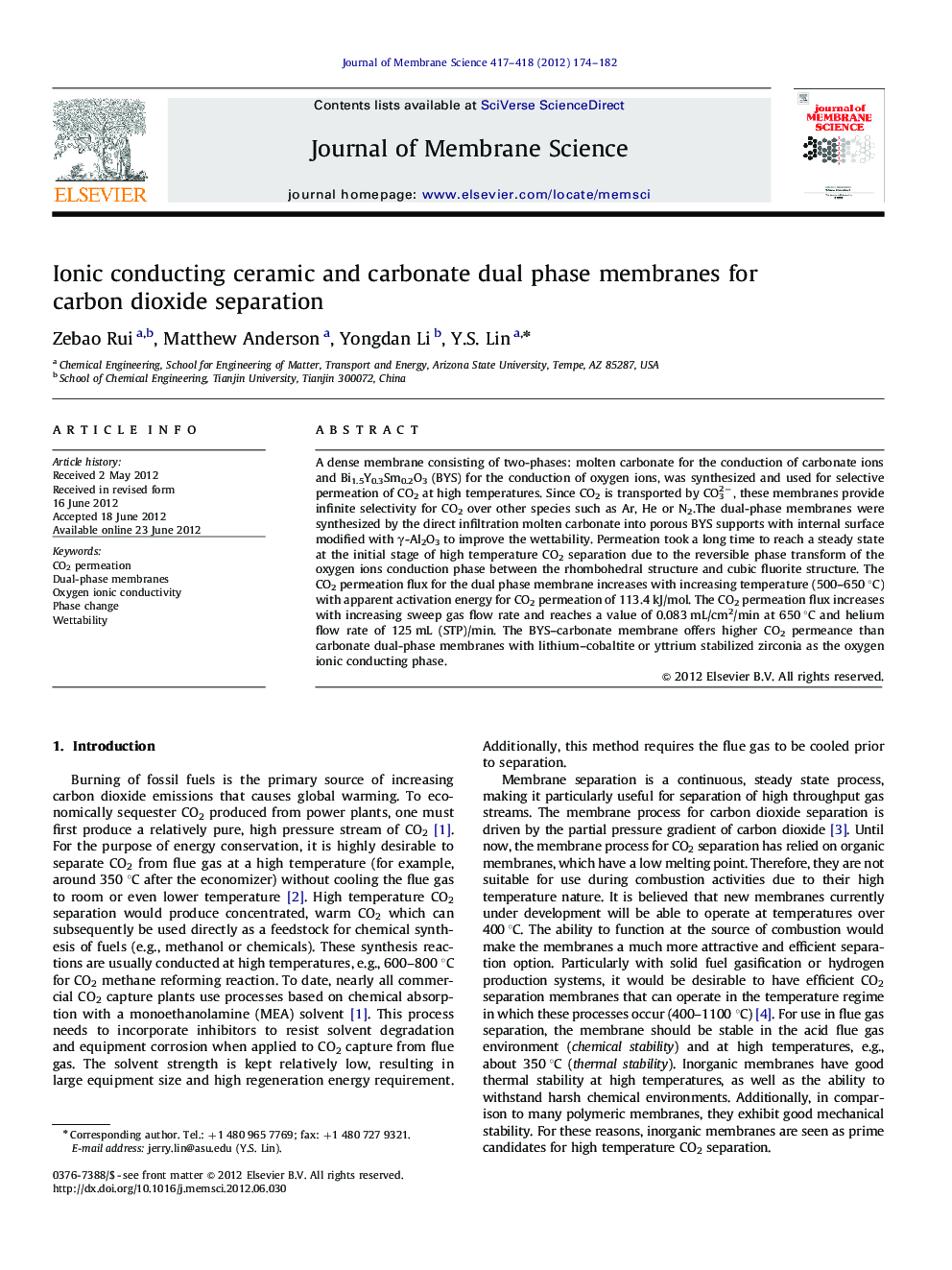| Article ID | Journal | Published Year | Pages | File Type |
|---|---|---|---|---|
| 634896 | Journal of Membrane Science | 2012 | 9 Pages |
A dense membrane consisting of two-phases: molten carbonate for the conduction of carbonate ions and Bi1.5Y0.3Sm0.2O3 (BYS) for the conduction of oxygen ions, was synthesized and used for selective permeation of CO2 at high temperatures. Since CO2 is transported by CO32−, these membranes provide infinite selectivity for CO2 over other species such as Ar, He or N2.The dual-phase membranes were synthesized by the direct infiltration molten carbonate into porous BYS supports with internal surface modified with γ-Al2O3 to improve the wettability. Permeation took a long time to reach a steady state at the initial stage of high temperature CO2 separation due to the reversible phase transform of the oxygen ions conduction phase between the rhombohedral structure and cubic fluorite structure. The CO2 permeation flux for the dual phase membrane increases with increasing temperature (500–650 °C) with apparent activation energy for CO2 permeation of 113.4 kJ/mol. The CO2 permeation flux increases with increasing sweep gas flow rate and reaches a value of 0.083 mL/cm2/min at 650 °C and helium flow rate of 125 mL (STP)/min. The BYS–carbonate membrane offers higher CO2 permeance than carbonate dual-phase membranes with lithium–cobaltite or yttrium stabilized zirconia as the oxygen ionic conducting phase.
► Thin doped bismuth oxide–carbonate membrane was synthesized. ► Controlling carbonate wettability of ceramic phase was critical to carbonate infiltration. ► Phase transformation of bismuth oxide affects CO2 permeation. ► New dual-phase membranes exhibit high CO2 permeance.
